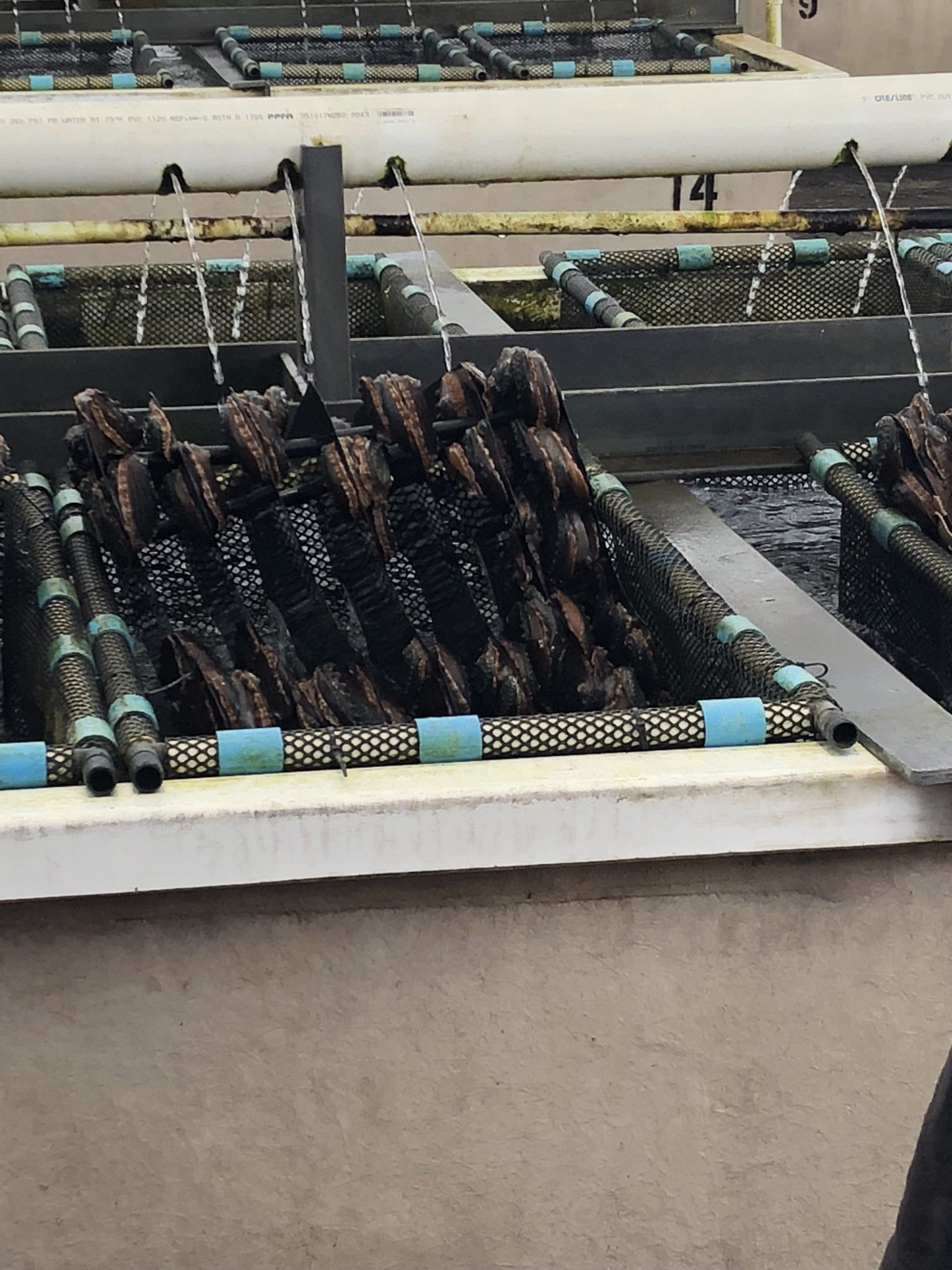Beginning our fifth day, we all got up early, ate breakfast, and drove out to the NELHA facility to look more in depth in ocean air cooling and other facilities. After arriving to the NELHA we crawled through the visitor center closet to find a secret ladder beneath the building. Once we crawled below, we moved under a skylight looking thing, and we saw how the sea water is tunneled under the building to flow and cool the building. After exploring the depths below the NELHA facilities we walked a couple hundred feet over to another complex where we got to see another use of ocean cooling in action. Basically they just used titanium plates to move water and control the differential in temperature… I think. Moving on, we got in the vans and went to a kimpachi fish farm to see how aquaculture has developed over time. This was a pretty interesting stop because we got to learn a lot about the research they do for aquaculture, and we got to see some fish and the facilities. A main part of their research is looking into how the fish grow and react to different diets, so that they can try to ween the fish off of diets containing fish. Currently they are trying different mixes of proteins whether its vegetarian or even vegan. We got to see some of the actual kimpachi fish which are super fast growing, going from newborn to adult in roughly seven months. One of the coolest things about the farms was the giant groupers they had, which weighed around a hundred pounds. After the aquaculture farms we went to Abalone farms to see how they grow fresh abalone and sell it to different restaurants. The guide said they pay roughly 100,000$ a month just for the water that they have to use and recycle. In addition, they need to grow algae to feed the abalone, and to sustain their large population they grow algae upwards of several million pounds. After finishing our tour at the farms we went to the house to get prepped for the Black water dive. Once the time came, we got in the vans and went to the harbor. We were greeted by the dive masters waiting to unload another boat of divers and switch the tanks and gear for our dive. While we waited, the dive masters gave us a briefing on the dive and informed us on safety precautions such as how to deal with sharks. According to the dive masters, we can’t really do anything except flash our light to get their attention, which scared me the most. However once we got on the boat and jumped in at the dive site, there were no issues. We got to see crazy specimens, usually the size of a pinky nail. During my dive we saw a siphonophore chain that stretched roughly sixty feet in the water. Also, Josh Lambus, one of the dive masters and a well renowned photographer, showed me a polychaete worm that exploded with a Golden bioluminescence that looked like fireworks. After twenty minutes we went to the surface and headed in to end the day.

To se some super cool black water pictures, visit jlambus.com and check out some of Josh’s work.




